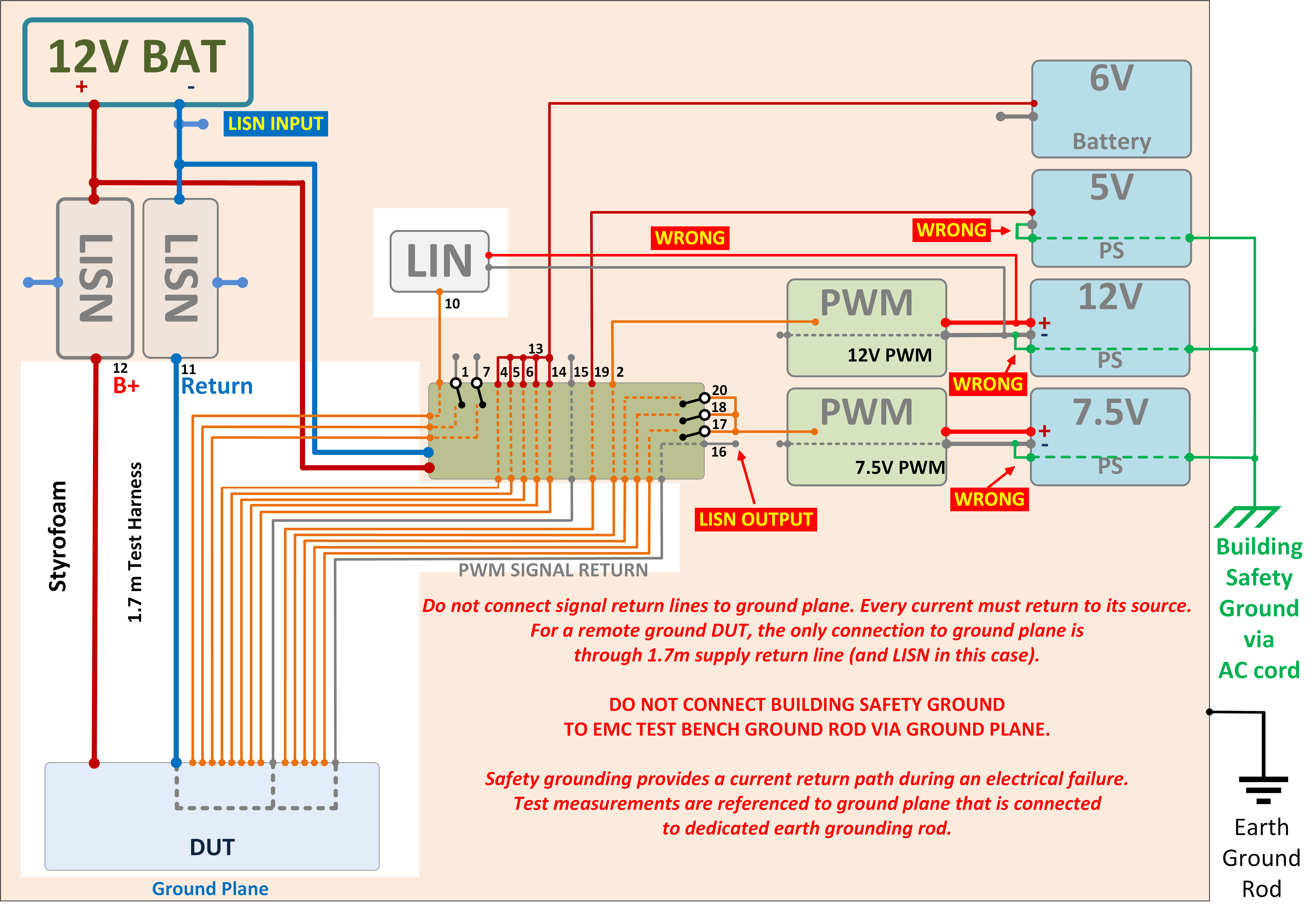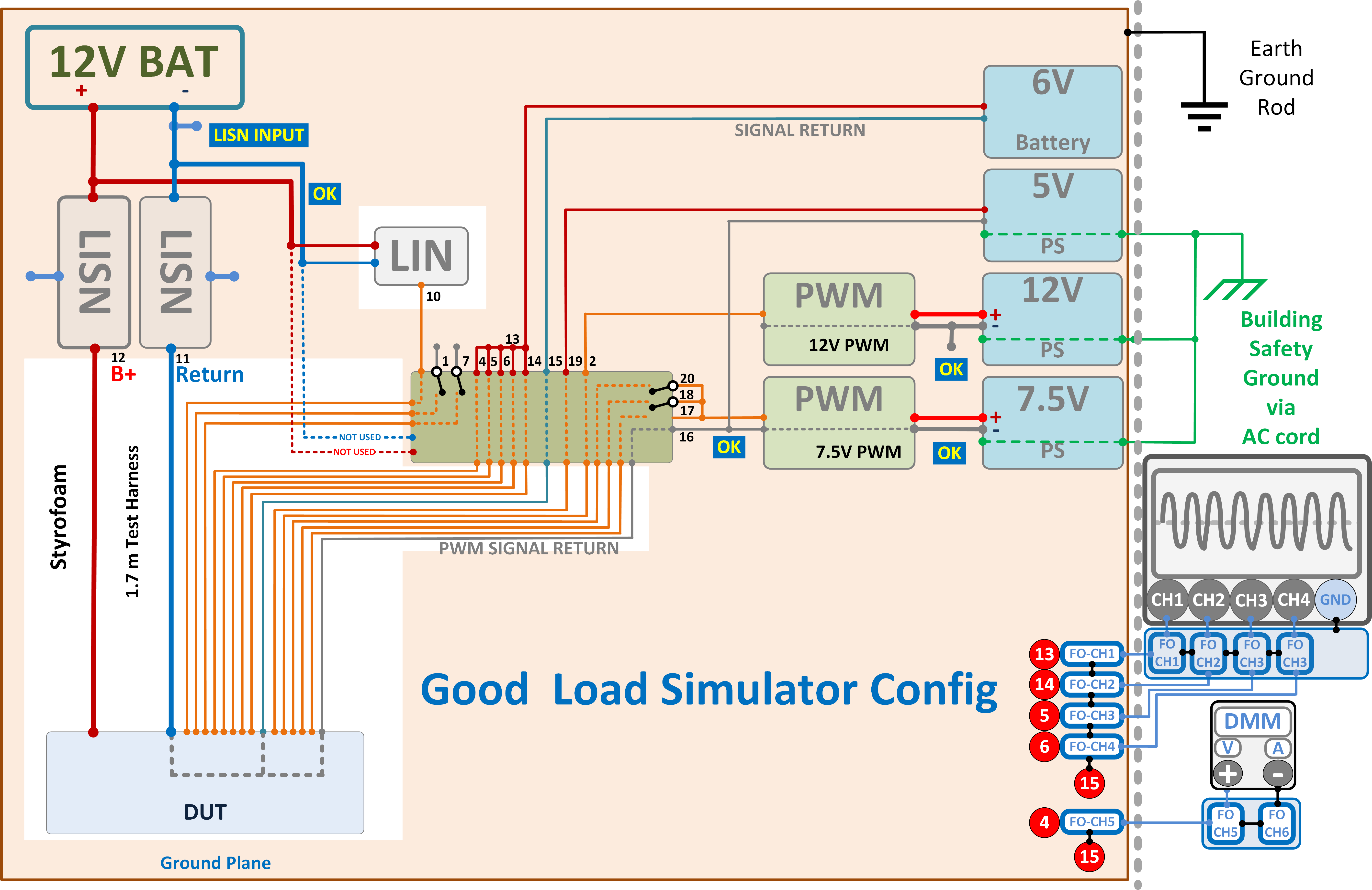The Load Simulator must be robust and as simple as possible to become a valid reference for DUT EMC performace evaluation. The most common mistake during LS configuration for RE, BCI, RI ALSE is related to how DUT's supply return is interconected with the rest of DUT support equipment. Incorrect grounding between DUT, Load Simulator, Support Equipment, Ground Plane, dedicated Earth Grounding Rod, and Buildin Safety Ground can end up in unwanted grounding loops or as shown below to a situation where the GND LISN Input is connected to GND LISN Output.
An ideal Load Simulator is just a pass-through enclosure with test points, control switches, no active electronics. Most of the time the DUT is powered straight from the output of the B+ LISN or a Pulse Generator following certain rules in terms of B+ and GND leads length. The input of the LISN for battery negative pole is always connected to ground plane. Depending on the OEM specification or international standard used, the Load Simulator is powered directly from the automotive battery or from the output of the B+ LISN. If powered from the output of the LISN, the active electronic components part of the LS can play a role in the EMC compliance of the DUT. In automotive EMC each test bench or EMC test chamber should have dedicated Eart Grounding Rod completely separated from the Buliding Safety Ground. The incorrect grounding configuration below shows how via the test ground plane the building safety ground is in contact with the dedicated earth grounding rod. In this situation the output of the LISN is shorted to its input cancelling the purpose of the LISN.

Never connect the negative terminal from support equipment power supplies to their terminal for safety ground.

2020-12-14 Christian Rosu